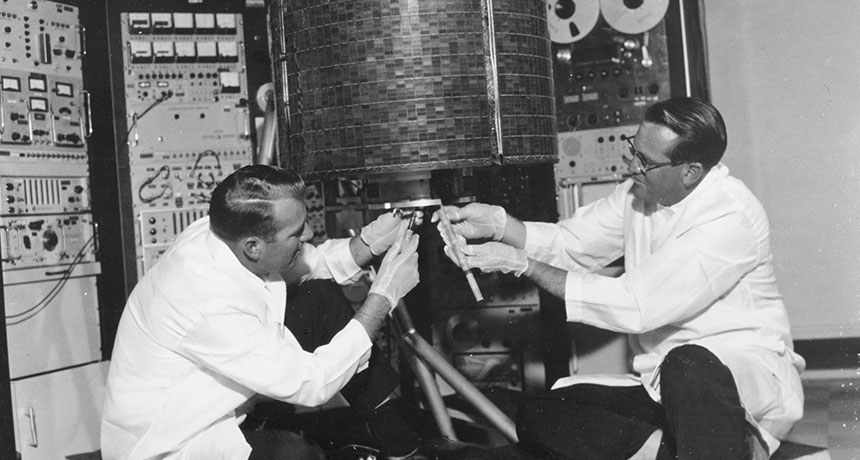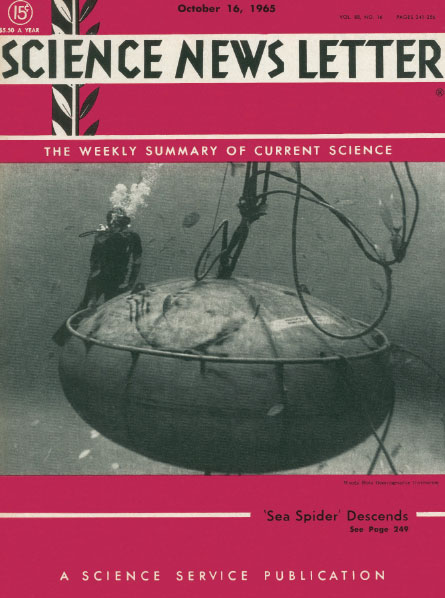Early satellite TV predictions highlighted instant communication potential
Excerpt from the October 16, 1965, issue of Science News Letter

EARLY BIRD Engineers work on Intelsat I, also known as Early Bird, one of the first international communication satellites. It launched in 1965 to relay and broadcast TV signals between Europe and the United States.
NASA






